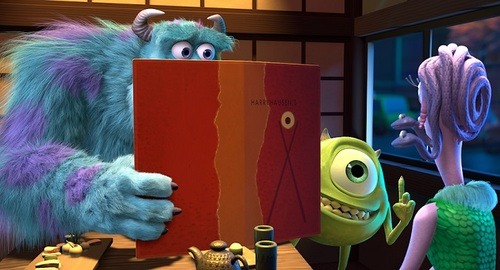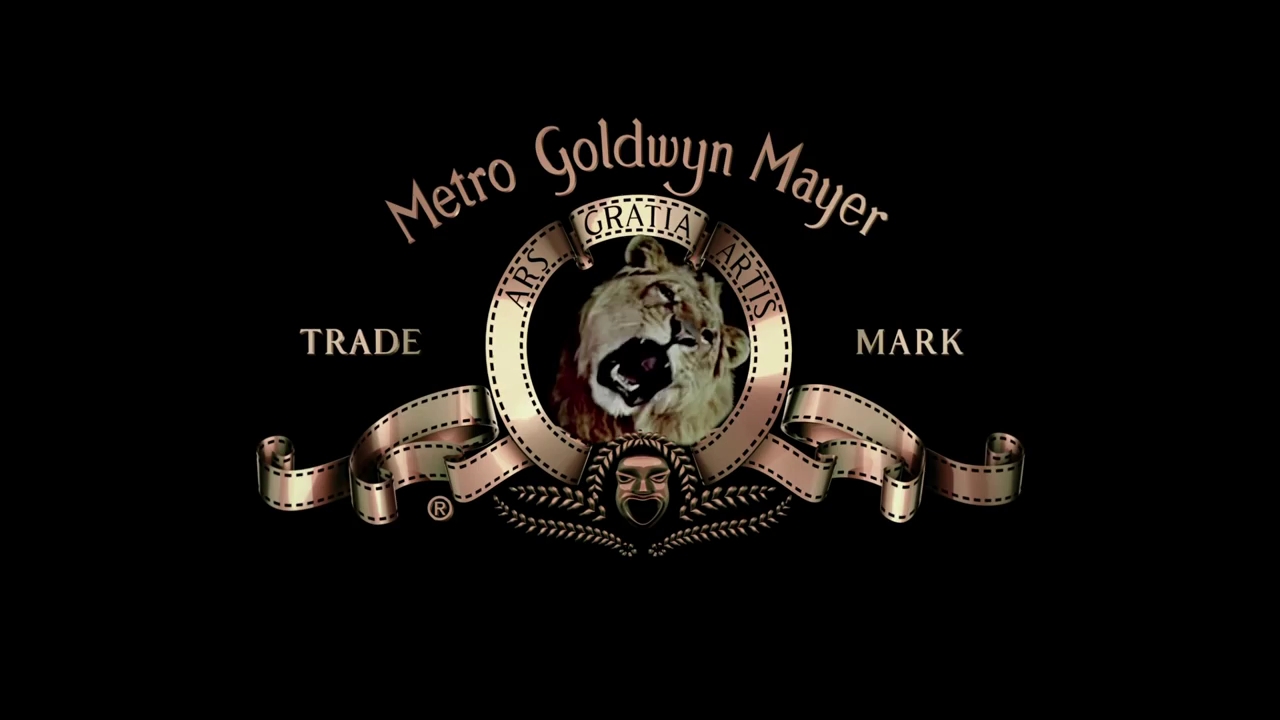This was an essay I wrote for extra credit in Video Production, I just added pictures and videos to make it more blog-friendly and entertaining.
As many Disney fans may have noticed, Pixar animation studios has a knack for including inside jokes and references from other movies; more commonly known as “Easter Eggs”. This can include characters from other movies appearing in unlikely circumstances, to names of important people who have worked with or influenced Disney in some way.
In Disney Pixar’s production of Monsters Inc, there is a reference to the name of an influential member of the animation world represented by the name of a sushi restaurant called “harryhausen's.” This of course making a funny and respectful bow to one Ray Harryhausen.

He is known as an “American visual effects creator”, writer, and producer who fathered the form of animation known as “stop-motion” . He was born on June 29, 1920 and recently passed away at the age of 92 on May 7, 2013.He was very passionate about film and the idea of bringing fantasy to reality.
As a child, living in Los Angeles, California, he was mesmorized of the magic and character that could be personified by the film industry. He was a fan of dinosaurs and often made miniature set pieces to create interesting scenes being performed before his very eyes.At 13 years old, he was able to experience a truly unique and progressive time in film history; the showing of The King Kong. in California’s Grauman’s Chinese Theater.
 This stop-motion film was one of the most influential of that time because in the 1930’s, productions were really beginning to blossom with special effects and character makeup. This of course, fueled Ray’s excitement, giving him the curiosity and motivation to continue with his passion to make movies.
This stop-motion film was one of the most influential of that time because in the 1930’s, productions were really beginning to blossom with special effects and character makeup. This of course, fueled Ray’s excitement, giving him the curiosity and motivation to continue with his passion to make movies.
He started using marionettes to produce shows and continued to educate himself on the strange and intriguing type of animation by attending museums and reading whatever article he could find on the subject.
His early attempts included making dinosaurs and prehistoric settings in a production studio he built in his father’s garage. This time also being before the reach breakthrough era of technology, he originally used a 16mm Victor camera. This was not an easy task because it was incapable of capturing an individual frame, so until he was able to purchase his a Kodak Cine II, the animation didn’t always come out as smoothly as intended.
 As a young adult, he ambitiously called and managed to arrange a meeting with one Willis O Brien of MGM Studios. He brought in a model of his most recent work at the time titled “ Evolution of the World” and was critiqued by Willis. He was one of Rays idols and biggest influences because of his work on King Kong. It was O Brien’s suggestion to study the anatomy of his dinosaur creations more closely that gave him the professional outlook and metaphorical push he required. Taking that advice, he soon enrolled into Los Angeles City College to take classes in Art and Anatomy, as well as art direction, editing and photography at the University of Southern California.
As a young adult, he ambitiously called and managed to arrange a meeting with one Willis O Brien of MGM Studios. He brought in a model of his most recent work at the time titled “ Evolution of the World” and was critiqued by Willis. He was one of Rays idols and biggest influences because of his work on King Kong. It was O Brien’s suggestion to study the anatomy of his dinosaur creations more closely that gave him the professional outlook and metaphorical push he required. Taking that advice, he soon enrolled into Los Angeles City College to take classes in Art and Anatomy, as well as art direction, editing and photography at the University of Southern California.  This gave him the understanding he desired that helped his production style, eventually making more professional films.He began creating short films that made him more well known in the community from Army Propaganda and orientation films to submitting animated Nursery rhymes around schools with much success. But it was his work on MGM’s Mighty Joe Young in 1949 which was considered his breakthrough into the film world. Working again with his idols, the film was awarded the Best Special Effects award at the 1950 American Academy Awards ceremony
This gave him the understanding he desired that helped his production style, eventually making more professional films.He began creating short films that made him more well known in the community from Army Propaganda and orientation films to submitting animated Nursery rhymes around schools with much success. But it was his work on MGM’s Mighty Joe Young in 1949 which was considered his breakthrough into the film world. Working again with his idols, the film was awarded the Best Special Effects award at the 1950 American Academy Awards ceremony He did special effects for many other feature length films including 20 Million Miles to Earth, The 7th Voyage Of Sinbad, Mysterious Island and the 1963 production of Jason and the Argonaut. Knowing that there’s a reference to his work in that movie in the music video Bones, by the Killers, I watched the skeleton fight and was very taken aback by the fluid motion of his animation work portrayed in the film.
He did special effects for many other feature length films including 20 Million Miles to Earth, The 7th Voyage Of Sinbad, Mysterious Island and the 1963 production of Jason and the Argonaut. Knowing that there’s a reference to his work in that movie in the music video Bones, by the Killers, I watched the skeleton fight and was very taken aback by the fluid motion of his animation work portrayed in the film.
Ray was honored with various awards for his work throughout his life. He won an Oscar in 1992, presented to him by Tom Hanks, in 2010 he was also awarded a British Academy of Film & Television Arts award for his “unique contribution to cinema” and in 2011 he was awarded a Lifetime Achievement award by the Visual Effects Society.
Ray Harryhausen was undoubtedly an artist with ambition and character beyond words and recognition. Film makers and individuals who enjoy and appreciate the magic of film-making will remember him and his influence for years to come.
Now, after his retirement and eventual death, the organization by the name of The Ray & Diana Harryhausen Foundation, now owns his rather impressive collection of models, artwork, miniature sets, infinitely preserving over 50,000 items to keep his legacy alive.
Now, after his retirement and eventual death, the organization by the name of The Ray & Diana Harryhausen Foundation, now owns his rather impressive collection of models, artwork, miniature sets, infinitely preserving over 50,000 items to keep his legacy alive.



No comments:
Post a Comment